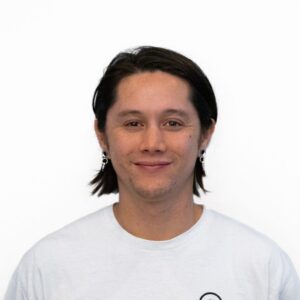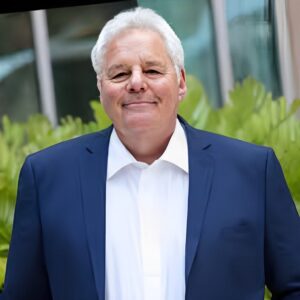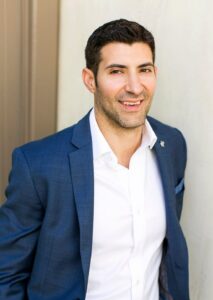An Interview With Fotis Georgiadis
You need to believe in what you are doing. The sacrifices you will need to make can only be tolerated if you believe deeply that what you are doing is worthwhile. For example, I used to golf, but for the past six years I have barely touched a club.
As a part of my series about “Big Ideas That Might Change the World in The Next Few Years”, I had the pleasure of interviewing Dr. Harold Punnett, co-founder of NervGen Pharma.
Harold Punnett, DMD, co-founder of NervGen Pharma, is an accomplished angel investor who has been the director of multiple start-up companies. As a recently retired dental surgeon with a practice in British Columbia, Canada, he has an extensive knowledge of medicine and physiology, including cell biology. Along with this knowledge, he has a deep passion for those suffering from spinal cord injury and other nerve-related challenges.
Dr. Punnett is a Member of the College of Dental Surgeons of British Columbia, Member of the British Columbia Dental Association and Member of the Canadian Dental Association. He received his doctorate degree from the University of British Columbia.
Thank you so much for doing this with us! Before we dig in, our readers would like to get to know you a bit. Can you please share with us the most interesting story that happened to you since you began your career?
The unusual path that my career has taken is the most interesting story. I’m a dentist by profession but about 30 years ago, I met a group of Vancouver, BC-based start-up specialists who were actively looked for interesting ventures and funded them through the Canadian public markets. From a very young age, I recognized that I had a strong entrepreneurial side of my character, and it is interesting to me that this part of my personality found an outlet above and beyond what my dental career offered. In effect, I have managed to pursue a dual career over these past decades — both as a dentist and as an angel investor in early-stage companies. This duality gave me the skillset that enabled me to discover the science that forms the basis of NervGen and to help to create the company around that technology.
Today, NervGen is a publicly traded (TSX-V: NGEN, OTCQX: NGENF) clinical stage biotech company dedicated to discovering and developing treatments for patients suffering from medical conditions related to nervous system damage, either as a result of injury, neurodegenerative disease, or other causes.
Which principles or philosophies have guided your life? Your career?
I’ve tried to live what I would term a ‘good’ life. By that, I mean to be honourable, truthful, shoulder responsibility willingly and set goals and work hard to achieve them. And, I strive to treat people with kindness and respect. If you can accomplish this, you will be able to ground yourself in the maelstrom of life. And, you will have a great chance at fulfillment and happiness.
Ok thank you for that. Let’s now move to the main focus of our interview. Can you tell us about your “Big Idea That Might Change the World”?
NervGen Pharma has developed a drug that has the potential to operate at a fundamental level after damage to the central nervous system (CNS). And it does not matter if that damage is traumatic, like a spinal cord injury, traumatic brain injury or stroke, or due to a disease, like multiple sclerosis or Alzheimer’s disease. In animal studies, our drug has been shown to allow the nervous system to heal in multiple ways that produce meaningful recovery. The accepted ‘truth’ that the central nervous system has no innate capacity to heal is, in fact, not true.
How do you think this will change the world?
Practically speaking, today’s therapeutics have almost no ability to repair damage to the nervous system. For example, in the case of spinal cord injury there are currently no drugs being offered.
With a condition like Alzheimer’s disease, the currently available drugs are extraordinarily limited in their ability to address the increasingly horrific burden of this disease.
Our drug offers real hope to these people and to sufferers of other conditions as well, including traumatic brain injury (TBI), amyotrophic lateral sclerosis, commonly known as ALS or Lou Gehrig’s disease, multiple sclerosis (MS) and others.
There are hundreds of millions of people around the world that suffer from these types of conditions, and they currently have little to no hope. If our drug works even partially as well as we have shown in our preclinical animal models it would indeed change the world. Based on first scientific principles of drug development, I believe it has a good chance of translating to humans.
It’s such an exciting time for me and the company. When I was first pitching the idea to the early investors I would say, “If it works in MS that would be amazing; if it works in Alzheimer’s disease that would be incredible; but if we can help people in wheelchairs to walk again, well that would be biblical.” And, it would indeed be miraculous, but it would be a miracle that was grounded in decades of meticulous and dogged research from our founding scientist, Dr. Jerry Silver, who is a Professor in the Department of Neurosciences at the School of Medicine at Case Western Reserve University.
Keeping “Black Mirror” and the “Law of Unintended Consequences” in mind, can you see any potential drawbacks about this idea that people should think more deeply about?
This is the purpose of the regulatory pathway for drug commercialization and why it is so arduous, costly and time consuming. When a new drug with a new mechanism of action is being proposed for human use, our regulatory agencies provide an effective and necessary framework to avoid any ‘unintended consequences’. Thus far in our Phase 1 human clinical trials, we are showing excellent tolerance to our drug with a wide therapeutic window of safety. In fact, our results have exceeded our expectations both in terms of safety and the excellent pharmacokinetics of our drug.
Was there a “tipping point” that led you to this idea? Can you tell us that story?
Yes, there definitely was and it was intensely and painfully personal. My life plans never envisioned that I would co-found a company dedicated to helping people with spinal cord injury and other conditions of nervous system damage.
But six years ago, in March of 2016, my daughter-in-law, Codi Darnell, fell and broke her back becoming a complete T-11 paraplegic. This means she has no sensation or movement below her belly button. Her doctors told her she would never walk again and that her condition was permanent.
I have never been a person who accepts things as inevitable; in fact, my personality usually questions emphatic pronouncements of any sort. I began to learn all I could about spinal cord injury. I had the requisite ‘omies’ and ‘ologies’ from my dental training including anatomy, neuroanatomy, biology, pathology, histology, physiology, and pharmacology, so the literature was very accessible to me.
I was also certain that if I could find a technology that was truly revolutionary, I would be able to form and fund a company around this technology. At first, the search was disheartening as I poured over hundreds, if not thousands, of peer reviewed papers from all over the world.
I contacted scientists from the U.K., Italy, France, Israel, and even Russia, and of course North America but found nothing exciting. But these conversations with scientists all over the world did confirm to me the basic decency of people, as everyone I contacted was uniformly gracious and helpful to me as I continued my search.
Finally, I came across a 2015 paper from the lab of Dr. Jerry Silver. When I started this journey, I had hoped I would find an undiscovered technology created by some young genius. Well, I did indeed find the technology, but instead of a young genius it was a somewhat older genius (though young at heart) named Dr. Jerry Silver. His discovery was completely different from anything I had encountered to date.
Upon reading this paper, my intuition immediately told me that Dr. Silver had discovered what looked like the fundamental reason that the nervous system had little to no capacity to heal itself after damage. And this failure to heal had always seemed odd to me. Why has mother nature evolved a system that can’t repair what is arguably the most important part of ourselves? Without our nervous system, we are nothing — we can’t move, we can’t feel, we can’t think. And yet, we cannot heal from damage to the CNS. But Dr. Silver’s discovery explained why and once I understood how fundamental his discovery was, I became very excited.
Although both Dr. Silver’s initial research and my personal reason for searching were both centered around spinal cord injury, it rapidly became apparent to me that this technology had a pan-CNS effect and the number of indications that we could potentially positively affect are very large indeed.
Here was a technology that was truly revolutionary. Here was a technology that I could form a company around. The unmet need and the potential of this technology to help is massive.
And, if we are successful, I would have reached the original end goal of this journey — improve the quality of life of my daughter-in-law, Codi.
What do you need to lead this idea to widespread adoption?
Money and time are what will lead this revolutionary technology to widespread adoption. The latter is inexorable; the former is manageable. Thus far, we have executed our strategy extremely well and have raised over US$30 million to-date. We have gone from a bench-top academic science to a biotech company halfway through a Phase 1 human clinical trial in three years. In biotech terms, that’s impressive. The need for our drug is so pervasive that once we have shown efficacy and taken it through the regulatory pathway to a marketable drug, it has the potential to be adopted everywhere very rapidly. We are not that far away from showing efficacy as we hope to have an early read out next year in our Phase 2 SCI clinical trial which we plan to carry out at Shirley Ryan AbilityLab in Chicago. They are the number one rated rehabilitation centre in the world, and I am thrilled that they are now part of the NervGen journey.
What are your “5 Things I Wish Someone Told Me Before I Started” and why.
- It will consume your life. NervGen’s demands on top of an already busy dental practice have been taxing. I have cancelled many appointments for my patients at the last minute as NervGen’s development proceeded. My staff and my patients have been very supportive of this journey which has made the last six years possible. It is, without a doubt, the most rewarding time of my life.
- You need to believe in what you are doing. The sacrifices you will need to make can only be tolerated if you believe deeply that what you are doing is worthwhile. For example, I used to golf, but for the past six years I have barely touched a club.
- Communicating a paradigm shifting big idea to a world that is full of other companies claiming to be the next great thing, is difficult and will take much more time than you think. Visionary thinkers are rare. For most people, playing it safe and following the crowd are the default positions. Trying to convince people “that impossible isn’t” takes time.
- You will need to be comfortable making important strategic decisions with highly imperfect and incomplete information. Going from A to B will involve an almost infinite number of choices. Do I turn left now, or right later? Do I spend money here or there or both? Making the wrong choice can be disastrous but you will have to be comfortable making that choice.
- Things will go wrong. Anticipate problems and develop mitigation plans just in case. Trying to change the world is not for the faint of heart. But if you never give up on a dream it is possible to change the world.
Can you share with our readers what you think are the most important “success habits” or “success mindsets”?
Always have humility. You don’t know enough to be successful on your own, and I defer to Shakespeare here:
“Modest doubt is call’d the beacon of the wise”.
Realize that you won’t have all the answers, or all the skillsets needed to be successful. Build a team around you that fills in those gaps and listen to them. Engage with them. Imbue your team with the same passion you feel, and you will get much more than 100% from them. And always recognize that constructive dialogue with other motivated and smart people will increase your chances of success dramatically.
Some very well-known VCs read this column. If you had 60 seconds to make a pitch to a VC, what would you say? He or she might just see this if we tag them 🙂
Look closely at our science. We have shown unprecedented results across multiple peer reviewed publications, both internally and from independent labs, in six different indications which are available to access here. We are on the brink of efficacy trials, and reaching a major milestone will likely dramatically increase our valuations. We have shown that the nervous system does indeed have an innate ability to repair. We allow the nervous system to heal itself. Call us.
How can our readers follow you on social media?
Please visit our website at www.nervgen.com where we also feature a blog written by my daughter-in-law, Codi. We are also on Facebook, LinkedIn and Twitter. We also invite you to watch our videos on our YouTube channel.
Thank you so much for joining us. This was very inspirational.
NervGen Pharma: Dr Harold Punnett’s Big Idea that Might Change the World was originally published in Authority Magazine on Medium, where people are continuing the conversation by highlighting and responding to this story.



